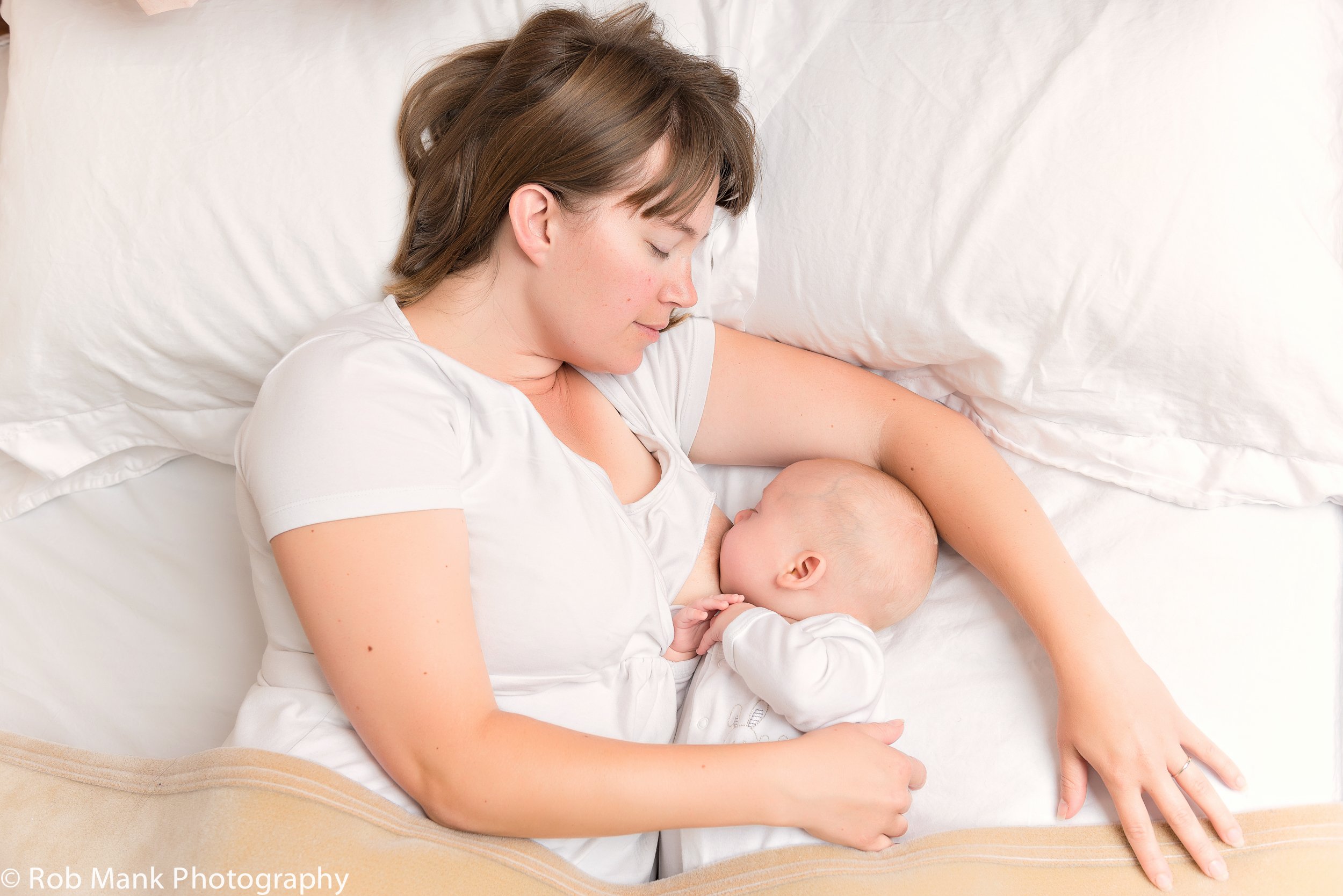An Academy of Breastfeeding Medicine Protocol, And How It Pertains To You
Written by Laura Silvas, RN IBCLC, Reviewed by Dr. Melinda Boss, PhD
In the US, and across western medicine, we have developed different views, opinions, and practices that may actually not be best practice for our baby’s development. Across the world, mothers co-sleep, breast-sleep, dream-feed, etc. In the US, it has been highly discouraged, frowned upon, and a topic of much controversy. Recently, the Academy of Breastfeeding Medicine released its protocol for “Managing Nighttime Breastfeeding in Young Infants”. Here at Leva, we are firm believers in supporting mothers, and evidence-based practice. So, what does this lengthy protocol say, and how does it apply to you?
This protocol can be *triggering* for a multitude of reasons. Sleep training, cry it out, SIDS. Let us start by saying, as always, at Leva, we are here to support you. You do what is best for your family and circumstances; there’s no judgment here. If this particular study helps you to decide what works for you, then great. If it is irrelevant, or you have figured out what works for your little, awesome! As new and more research comes out, we will keep you updated to help you reach your goals, for breastfeeding and sleep.
Studies show that nighttime separation of baby from mother increases cortisol levels in the baby (which is the hormone that tells us a person is stressed) without the infant showing any visible signs of distress. With separation, the infant may, in fact, sleep longer and experience decreased nighttime awakenings. However, in young babies, this can increase the risk of SIDS (Sudden Infant Death Syndrome).
If you’ve recently returned to work following maternity leave, you may have noticed your baby awakening more often through the night than before. The ABM protocol states that your baby is trying to make up for lost time at the breast, but there is no evidence for it, according to expert Dr. Melinda Boss. Your baby is likely just behaving to its physiologic norm.
In the first 6 months, when your baby wakes, they are doing two things here: supporting brain growth and satisfying their hunger. This naturally stimulates your breast to make enough milk. This can be grueling following a long day at work.
Dr. Boss explains why it is critically important to understand why babies wake at night: “Our babies have short sleep-wake cycles, largely to support the significant amount of neurologic development that occurs after birth (75% brain growth occurs postnatally). The composition of human milk supports a baby’s immature organs (low in protein and fat, high in lactose) but means that frequent feeds are necessary. For several reasons, it is normal for a baby to wake for a night feed in the first 6 months of life. It is also normal for a baby to wake at night in the second 6 months of life, although this is not necessarily for a feed. This helps brain development. Night waking is normal and not related to whether a baby is breastfed, or the introduction of first foods.”
As you probably guessed, limiting your baby’s time at the breast, or even frequency at the breast during those long nights, can ultimately lead to early cessation of exclusive breastfeeding. Being aware of what is happening with your baby’s behavior can help you make an informed decision about what is best for you.
We’ve all heard it, right? “Formula-fed babies sleep better” “My baby takes a bottle and sleeps most of the night.” While this sounds great, it is not supported by evidence. Bedsharing = longer sleep. Read that again. Studies show that breastfeeding mothers sleep better than those that are formula-feeding! The ABM protocol also states that “bed-sharing was associated with longer sleep duration in breastfeeding mothers.” As previously mentioned, nighttime feeds are important to maintaining a good milk supply, but it also helps to extend your breastfeeding journey! The side-lying position doesn’t always come very naturally. It can sometimes take some work to get right. If you’re wanting some help trying out different positions, let us know, we’ve got lactation consultants on staff ready to help!
You often hear about babies having their nights and days mixed up. Of course, breast milk has a hidden answer to help with that! It only makes sense that our hormones also pass to our babies, including melatonin. Most people are aware of melatonin as the pill that helps them rest (which you may be able to get over-the-counter or by prescription). While these supplements aren’t safe for your baby to take, melatonin is naturally produced by your body and passed through your breastmilk to your baby.
The mombie brain is no joke. One particularly interesting study focused on the quality and quantity of sleep for moms, which we know is slim to none as it is. Studies are proving the truth behind what we’ve commonly heard before, “co-sleeping is the only way I get any rest.” “94% of those who routinely bedshared reported they had obtained “enough” sleep after bedsharing.
One of the first things that you may think of when you think of bedsharing, is, “What if I roll over my baby?”. This is a common question, so much so that they’ve done research on it! Breastfeeding mothers naturally sleep in a C- position, or a cuddle-curl (see image below). This “protective circle around the infant with her arms and legs, as her arms block the pillow from the infant.”
(Creator: Rob Mank Photography)
The study also mentions the use of a “sidecar,” or bassinet, which may be another option for your family. There are a ton of bassinets and bedside cribs, even ones that open/attach to your bedside. These can help your baby sleep near you, but not in your bed.
Each baby is different. The protocol states that breastfed mother/baby dyads return to sleep faster at night, as they don’t have to burp the baby or change diapers after each feeding. We know that not every baby will go back to sleep with a wet diaper. Some babies, although breastfeeding and taking in less air, may still experience reflux and need burping. In general, this portion of the ABM protocol links with the previous to show how moms can alternatively rest a bit more by co sleeping versus with their baby separated from them at night.
As always, the safety of your baby is the top priority. It’s important to note, that although studies are showing the safety of bedsharing, there are exceptions, as with everything. Key points for safe co-sleeping include:
Make sure your mattress is firm and flat; avoid sofa/chair sharing and soft bedding
Do not co-sleep with a parent under the influence of alcohol/drugs
Avoid co-sleeping with a smoker, even if they don’t smoke in the bedroom
Place your baby on their back to sleep
Avoid sleeping with a preterm or low birthweight infant
Tie up long hair and remove jewelry, including teething necklaces and pacifier chains that could be a strangling risk
Again, we are a judgment-free zone. We want the best for your family, and ultimately, this is your decision to make. Please be aware that if you are exclusively breastfeeding, sleep training can have negative effects on your overall supply, and/or journey. If you are working with a sleep training program, we highly encourage you to get with our lactation consultants as well, to make the best plan possible for your family.
You can view the protocol here:
https://abm.memberclicks.net/assets/DOCUMENTS/PROTOCOLS/Physiologic Infant Care Protocol 37.pd



